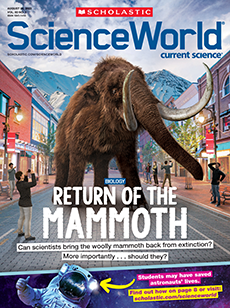Maya Penn has always loved to create. “I have been extremely passionate about art and design since I could hold a pencil,” she says. As a kid, one of the ways she channeled her creativity was by repurposing old items into something totally new. “When I was 8, I started taking old clothes and fabric and turning them into new designs,” says Penn, whose mother had taught her how to sew. “People wanted to know where to buy them, and I got the idea to make my own business.”
Two years later, Penn launched her own online store to sell her eco-friendly fashion brand, Maya’s Ideas. Not only does Penn’s business use recycled materials, it also hires local workers and donates 10 percent of its profit to environmental and social causes. Traditional clothing manufacturing, on the other hand, requires massive amounts of raw materials and generates a startling amount of pollution. Most mass-produced clothing is also made in poorer countries where workers face grueling conditions for little pay. Penn, who is now 20 and lives in Atlanta, Georgia, hopes her company can serve as an example for the rest of the fashion industry.
Maya Penn has always loved to create. “I have been extremely passionate about art and design since I could hold a pencil,” she says. As a kid, she found ways to be creative. One way was to turn old items into something totally new. Her mother had taught her how to sew. “When I was 8, I started taking old clothes and fabric and turning them into new designs,” says Penn. “People wanted to know where to buy them, and I got the idea to make my own business.”
Two years later, Penn started her own online store. It sells her eco-friendly fashion brand, Maya’s Ideas. Penn’s business uses recycled materials. It also hires local workers and gives 10 percent of its profit to environmental and social causes. That’s very different from traditional clothing manufacturers. They use huge amounts of raw materials and produce a lot of pollution. Most mass-produced clothing is also made in poorer countries. The workers there face difficult conditions for little pay. Penn is now 20 and lives in Atlanta, Georgia. She hopes her company can be an example for the rest of the fashion industry.
